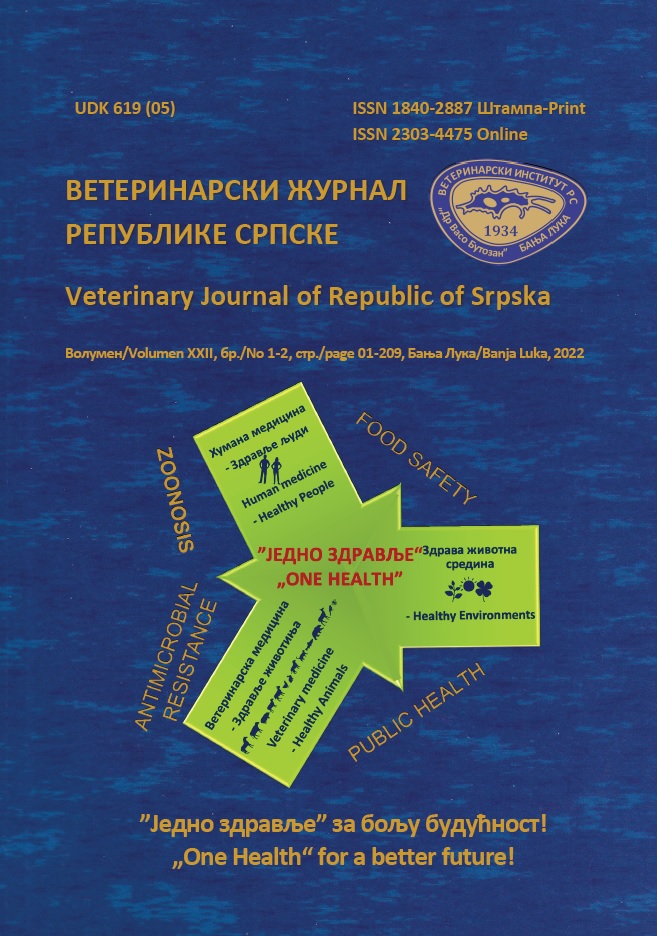ANALYSIS OF THE QUALITY OF SEXED BULL SEMEN BY COMPUTER-ASSISTED SEMEN ANALYSIS-CASA
DOI:
https://doi.org/10.7251/VETJEN2201090VAbstract
The quality of the ejaculate is determined by examination of the macroscopic (volume, density, color, smell) and microscopic properties of the sperm (concentration of spermatozoa in 1 ml and the total number of spermatozoa in the ejaculate, morphology, vitality, mobility of spermatozoa and integrity of the acrosomal membrane). Computer assisted semen analysis (CASA) is an automated system that measures sperm motility, kinetics and concentration. Some systems have modifications for evaluating the morphological characteristics of spermatozoa. The assessment of morphological characteristics of spermatozoa can be performed by microscopic examination (presence of normal and pathological spermatozoa, integrity of sperm cell membrane and acrosome abnormalities). The Blom method, as the method of the staining of the sperm smear with eosin and nigrosine, determines the vitality of the semen. In modern cattle breeding, sexed bull semen (semen from which desired gender of calf will be delivered) is used more and more. The analysis of sexed semen, and especially the comparison of its quality with conventional semen, is an increasingly common requirement on the cattle production market. The aim of the work was to examine the quality of 15 samples of sexed bull semen, originating from imports. The tests included determination of concentration and kinetics using the CASA system, as well as assessment of vitality and morphological characteristics by Blom staining. The average sperm concentration in 15 samples was 19.61x106/ml of ejaculate. The total motility was 39.42%, while the number of immobile spermatozoa in the samples was 60.58%. The number of morphologically normal spermatozoa varied from 2.91x106 to 6.11x106, and the percentage of pathological spermatozoa from 8% to 28%. Taking into account the results obtained and the absence of standards related to sexed semen in the currently valid Regulation on the manner of marking of sperm, the manner of keeping records on sperm production, as well as on the conditions that must be met by animal sperm in terms of quality (Official Gazette of the Republic of Serbia, 38/14), it is necessary to carry out more frequent analyzes of sexed semen using the CASA method in order to obtain values that would become an integral part of the Regulation and thereby facilitate the manipulation of sexed semen on the market.

